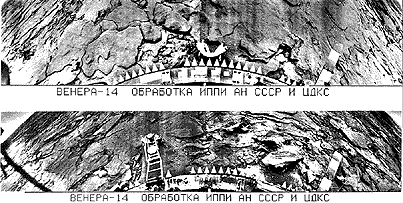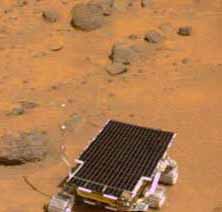|
Finally, the deep space explorers--spacecraft which break away from the Earth's gravity
Quite a few have visited the Moon or orbited around it, most recently "Clementine" and "Lunar Prospector". Some of these--both of the US and the USSR--mapped the moon or landed on it, as preparation for manned landings. The "Luna" series of the USSR conducted 7 soft landing of unmanned probes, two of them with wheeled robotic "Lunokhods," and two of those missions returned samples to Earth. Others spacecraft have visited the major planets of the Solar system. Voyagers 1-2, Pioneers 10-11, Galileo and Ulysses have flown past the giant planet Jupiter: the first four have also visited Saturn, and Voyager 2 continued and visited Uranus and Neptune. Currently the Cassini mission is on its way to Saturn. The Mariner series have explored Venus and Mars--and Mariner 10 even reached Mercury, for three separate encounters! The European pair of Helios spacecraft ventured inside the Mercury orbit, coming closer to the Sun that any other spacecraft--so far: NASA has plans for a "solar probe", to approach within 4 solar radii--only 2% of the Earth's distance, so close that a special shield would be needed to keep it from melting. Incidentally, it would be at that time the fastest moving object in the solar system, moving at 300 km/sec, 10 times faster than the Earth in its orbit.
Venus has received particular attention, from NASA's "Pioneer Venus" and most recently "Magellan", which mapped it by radar; two French balloons were successfully deployed by the Russian "Galley" ("Halley"--no H in Russian) on its way to meet comet Halley, and sent back data about the Venusian atmosphere. The Soviet Union has landed several instrumented modules on the planet's surface (a hellish place of high pressure and temperature) and has returned photographs from there (above).
Mars has received considerable attention too, including two US landers of project "Viking" and the current Mars Global Surveyor. Not long ago, "Mars Pathfinder" landed a small robotic vehicle Sojourner on Mars, controlled from Earth (on right). Two more rover missions, were launched by NASA towards Mars in mid-2003 and arrived in January 2004, releasing twin rovers--"Spirit" (January 4) and "Opportunity" (January 24). They carry extensive instruments for studying Mars rocks and soil, and are guided from Earth to explore the Mars surface. Actually, the first extraterrestrial rover was the "Lunokhod" of the Soviet Union, deployed on the Moon in 1970 and exploring it for close to a year. It had a tublike body supported by 8 wheels and a hinged lid lined with solar cells, which opened during the lunar day to soak up sunlight but closed at night to protect the inside. Its mission ended when the open lid accidentally brushed the side of a crater as the vehicle was climbing out, showering the cells with moondust. Ulysses flew by Jupiter and used the planet's gravity to deflect its motion to an orbit steeply inclined to the ecliptic, passing above the Sun's poles; this region of interplanetary space had not been explored before and has quite different properties than the one around Earth. Voyager 2 acquired sufficient velocity to escape the Sun's gravity, and among all spacecraft it is currently the one most distant from the Sun. According to theory, some time in the 21st century it will probably pass the limit of the solar wind. If its nuclear power sources hold out until then, it may even tell us about the interstellar space that lies beyond. Questions from Users: Picturing the Sun from a different distance *** Blimps on Mars? |

